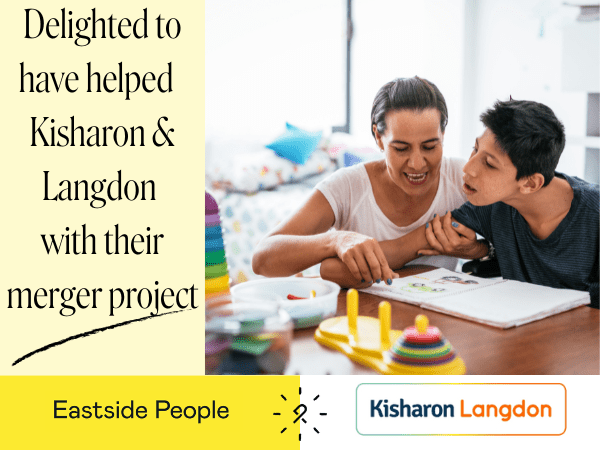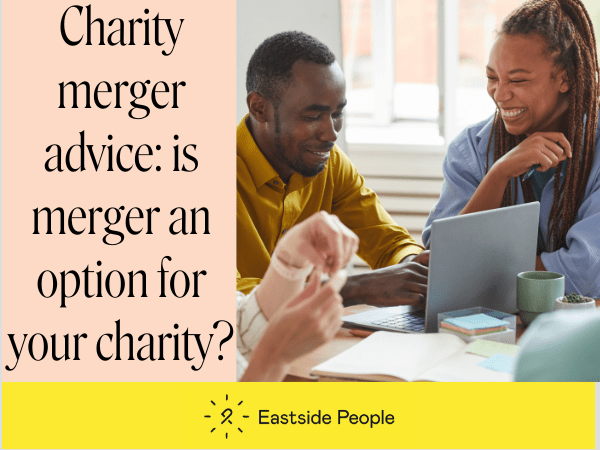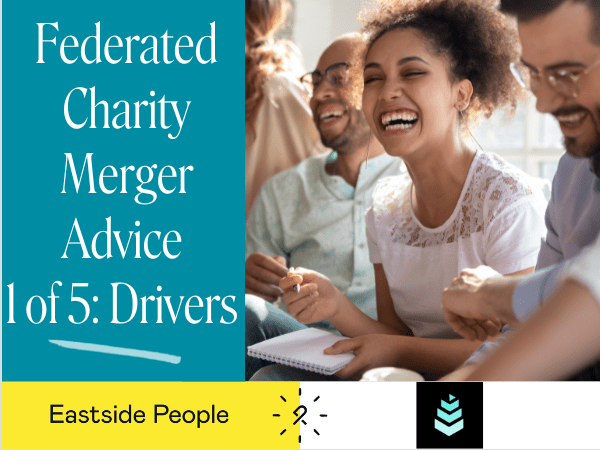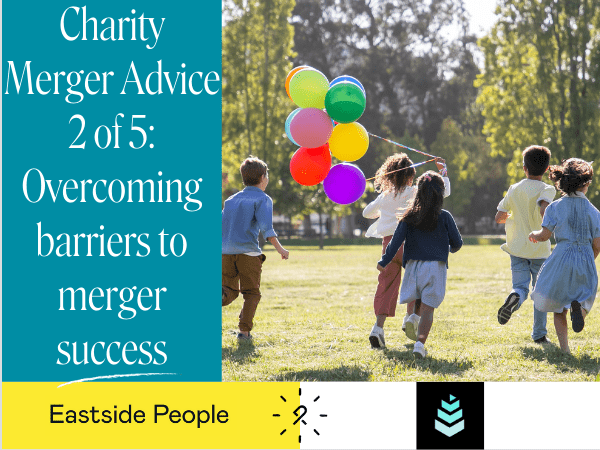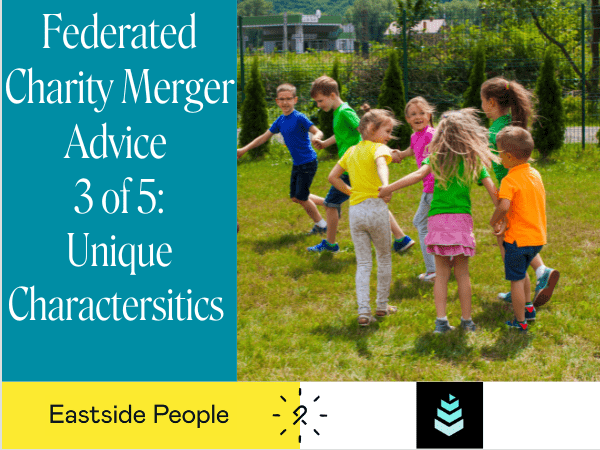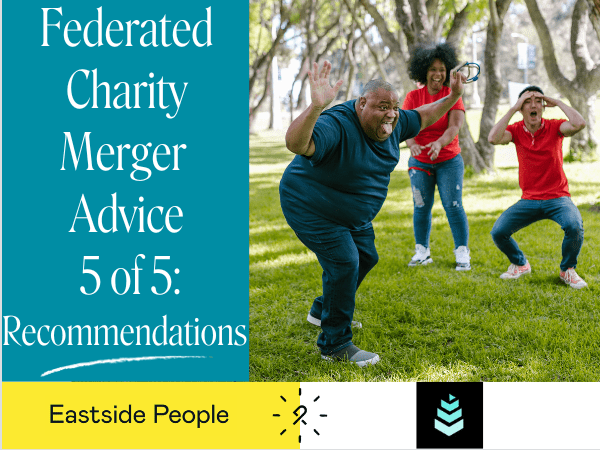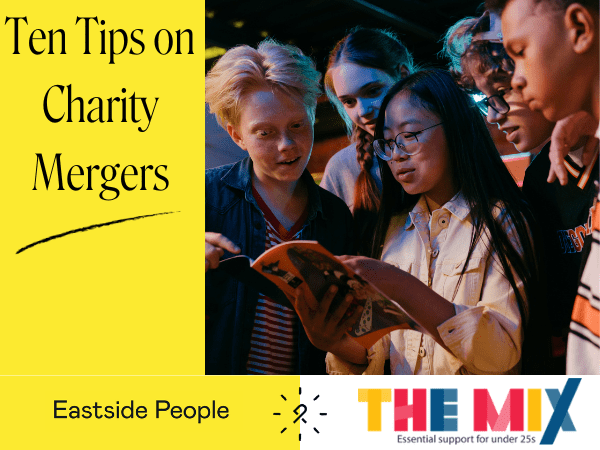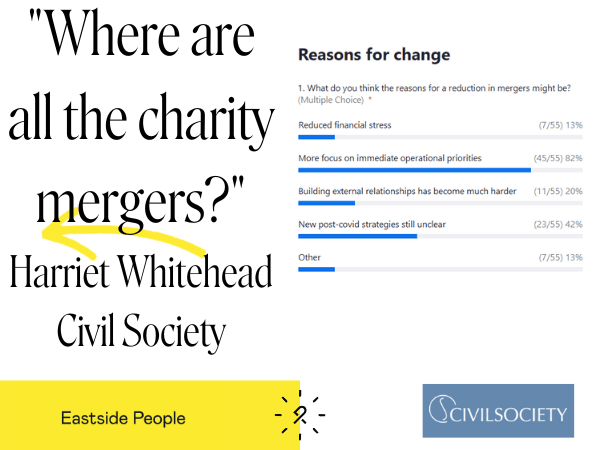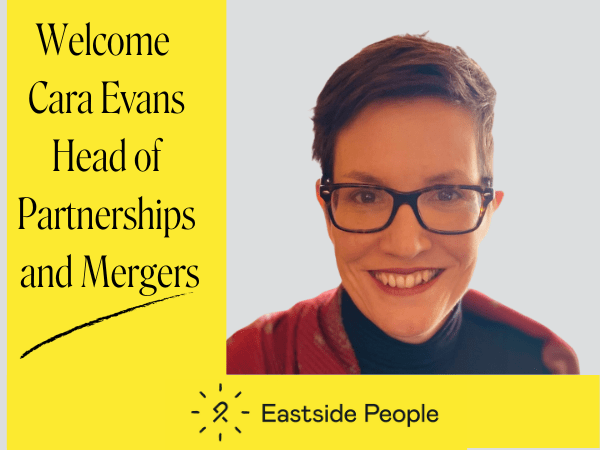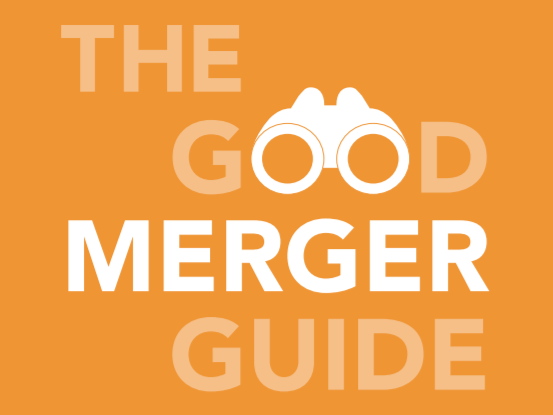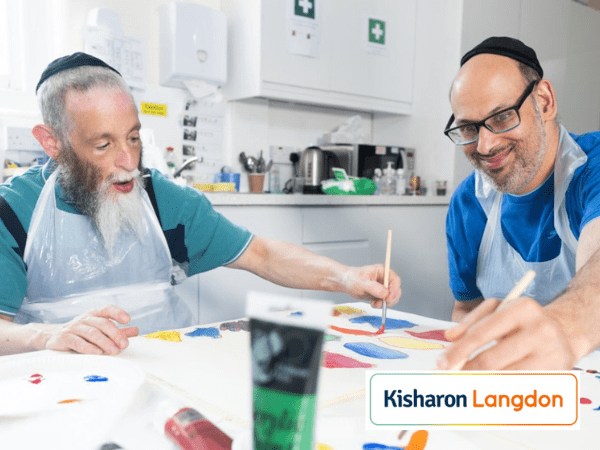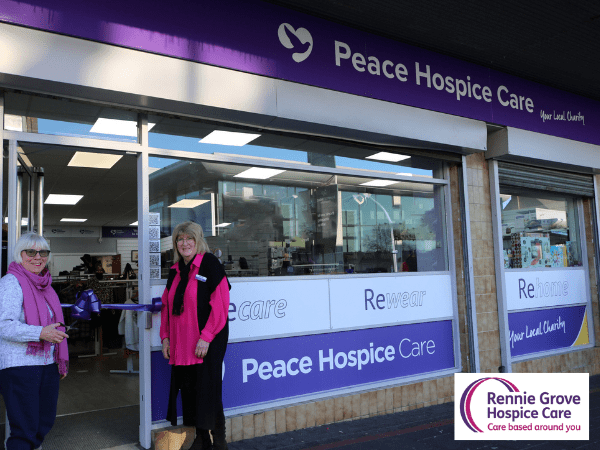Blog: Charity round table – Mergers for Sustainability and Diversification Question and Answer Session
This excerpt is from our charity merger round table which was held on 4th December 2024. The round table was attended by CEOs and leaders of charities and not-for-profit organisations who were interested in learning more about the best practices and opportunities from merger.
The round table was held under Chatham House rules but in this blog, we summarise the topics discussed, the questions asked, and the comments made by our speaker panel.
The speakers were:
- Cara Evans, Head of Partnerships and Mergers at Eastside People
- Jo Land, Group CEO Avenues Group
- Karina Hourd, Group Director of Business Development, Avenues Group
- Ricardo Gomes da Silva General Counsel & Director of Systems, Family Action
- Steve Chu, Eastside People Consultant and merger expert.
A big thanks must go to our guest speakers, Jo Land, Karina Hourd and Ricardo Gomes da Silva who stepped in at the last minute to offer their amazing advice and tips after our previously confirmed speaker had a family emergency.
Charity merger experience summary by Ricardo Gomes da Silva, General Counsel & Director of Systems, Family Action.
Family Action, a national charity working in local communities across England and Wales, has been protecting children, supporting young people and adults and offering direct, practical help to families and communities going through change, challenge or crisis for over 150 years.
They also speak up for the importance of family in national and local policymaking, amplify family voices and represent the changing needs of families in the UK today.
Ricardo started by saying that merger was a part of Family Action’s previous strategy for diversifying their income. They have undertaken 7 mergers over last 9 years involving a range of organisations of different sizes and differing ranges of services. They have also taken over services from 3 other charities that had gone into liquidation.
Ricardo said that Family Action adopts the Takeover Model of Merger (see the previous blog on this round table) but they do describe them as mergers because of the way that both charities are treated as equals during and after the process to make sure that the benefits for all parties can be achieved.
He acknowledged that each organisation has their own reasons to merge and that each merger has its own unique characteristics, and this has helped them to develop some key learnings that they use as part of a merger process.
Key learnings from Family Action’s work on mergers:
- The key stages within the merger process really come after Stage 4, when all the legal work, due diligence, board approvals and communications planning have been completed. This work gets you to the start line and Stages 6 (merger plan) and 7 (post-merger strategy process for ‘new’ organisation) are the most important to the longer-term success of the merger..
Read our Round table blog 1: Types of charity merger and the benefits of merger for details of all the stages).
- Identify 1 person to be the primary contact for your organisation (to liaise with and cover functions such as the CEO’ s office, legal, HR, IT, finance, the board) with the relevant contact in the merging organisation, otherwise the process and the communications can be over whelming.
- The benefits have been clear – they have been able to continue to deliver all the services that the merged organisations were previously delivering and due to economies of scale in central functions they have also been able to expand the services that they can deliver.
Merger Experience Summary: Jo Land, Group CEO and Karina Hourd Group Director of Business Development, Avenues Group
Avenues Group is a group model-based charity specialising in supporting autistic people, people with learning disability, acquired brain injury and complex support needs to enjoy fulfilling lives in the community. They do this by supporting and promoting their intellectual, emotional, physical and spiritual welfare, with 1,600+ staff supporting around 650 people with social care across subsidiaries in the Southeast, West Midlands, London and East of England.
Jo Land started by saying that the Avenues Group has completed a number of mergers, with the latest completing in November 2023 when Autism Hampshire joined Avenues Group. One of the reasons for this merger was to increase their geographical reach, diversify their income, improve their service offering to adults with autism and achieve a very fast way to serve the autism ‘market’ rather than starting from scratch.
Since the merger was completed, teams have worked closely to align systems, services, and adopt best practice, taking on more than 600 actions across 10 workstream teams. The integration which finished in December 2024, has brought consistent, person-centred support to more individuals and families while enhancing their combined capacity to grow and enabling a wider offering of support for people in local communities.
Each merger is different because it comes down to the organisation and the culture of the organisation and also the people (e.g. the trustees and the board) and how they feel about an acquisition/merger but at the start of this merger process, both organisations had a clear idea of the expectations of the potential outcome.
Jo mentioned that it is important to recognise that making the decision to be acquired can often be a difficult process for trustees and boards. Always check out the vision and value of the organisation that you are aiming to merge with:
- Are what people say they do and how things work what happens on the ground on a day-to-day basis?
- Do you feel that the two organisations can really gel together and that the vision and values could align, regardless of what the due diligence and financials tell you?
- Have you got alignment at board level and an understanding that you will have to invest both time and money?
If this isn’t the case, then a merger attempt could be undermined or fail. Don’t be afraid to withdraw if it becomes apparent that the two organisations could not work together.
Mergers can be quite costly. You have to spend money for a merger to work properly. Don’t expect to make savings straight away. Whether you need external advice depends on the skills and resources you have in-house. You will need to write a business case, do an audit, due-diligence and manage the negotiation. The due diligence is important and after you’ve been through one process and started another, you’ll realise that there’s always something you missed.
Jo added that the business case/rationale should be the document that you always go back to.
Karina Hourd, Group Director of Business Development led on the due diligence and creation of the business case for their board.
These are her tips:
- It is really important to have conversations with the board and get them lined up on what they want
- Mergers don’t happen overnight. These conversations can go on for a long time, sometimes years rather than. It is important to tie down exactly what you are looking for and where you start. Networking and discussions are important in this process. Organisations looking to merge should also talk to several possible partner organisations, not just one
- Understand that you may not be the only suitor, and you should also identify more than 1 potential organisation you may want to merge with. You may have to do a bit of a beauty parade and presentations to sell your organisation to potential merger partners
- Availability and quality of management information and reports can vary between charities (especially smaller ones). You may find that data is limited and/or takes a long time to produce
- Can values align and are they ready to change? Can the charity – their staff, volunteers etc do things differently (e.g. in a group structure)?
- Will it be financially viable – mergers aren’t cheap, so can your organisation afford to fund it?
- Have a risk register and track the risks including any red lines. (e.g. what comes up in the due diligence such as the pensions risk)
- Don’t try to do the due diligence over the summer – it always delays things when people are away on holiday.
Charity Merger Round Table Q&A
What are the key markers for merger integration completion for you (or are they different for each situation?)
Key markers are different for each merger according to Ricardo. It does depend on the size and geography, number of branches and breadth of services.
- Do give yourselves a set of key success criteria
- Communications: Up until completion, you are really only able to speak to the board and senior leaders but once the merger is complete you can speak to everyone. It is important to make sure that there is a focus on the staff who come over and having a good induction and constant communications. Be aware that it can take 2-3 years to embed everyone into the newly merged organisation.
- Lessons learned: look at lessons learned from any previous mergers e.g. it is best to quickly merge policies or procedures, or it will it lead to ambiguity and inconsistent practices and people feeling uncertain?
- Budget and success criteria: It is important to have a clear budget and key success criteria and to keep track of progress against these criteria.
- Be prepared to lose key individuals from at least one of the organisations as part of the merger process and with them their knowledge, networks and history. You will definitely need to have some HR resource close by to manage this aspect of a merger.
What are your experiences of the best points at which to carry out longer term organisational strategic planning during/post merger?
Ricardo said that they do try to look at it straight away in collaboration with the charity that they are merging with. They look at systems and business development opportunities. It’s a continuous process but the due diligence should have identified some priorities.
Looking for opportunities and longer-term strategic goals such as new geographical locations should either be done during the process or as soon as you have merged in collaboration with your new colleagues and over the next 2-3 years.
Strategy: A new strategy is important, but you may need time to bed the 2 organisations together and understand what opportunities there were compared to what was in the merger plan before a final strategy can be completed and approved.
What is the role of the Charity Commission in a merger?
Stev Chu, Merger Consultant at Eastside people said that the Charity Commission is not too interested in intervening in a merger if they feel assured that the trustees have fulfilled their responsibilities to their charity (e.g. running proper due diligence and taking experienced advice). and there aren’t going to be any potential issues with the board.
It is highly recommended to use a legal firm or team that are experienced with charity mergers to ensure that that all the legal documents are properly filed with the Charity Commission so that there won’t be any potential issues going forwards. For example, if your organisation is on the Charity Commission’s merger register, then any future legacies will automatically novate into the newly merged charity whereas if this process hasn’t been completed properly there could be a dispute about a legacy.
Ricardo Gomes da Silva added that one option is to keep the merged charity as a dormant subsidiary on which you file nil returns, as this can enable you to receive future legacies (e.g. left in a will).
You may also need to notify other regulators such as OFSTED if that is relevant to your area of business.
What questions would you ask about culture and readiness for change to assess compatibility?
Jo Land said that a check list is not the best option for this. She recommended going to visit the front end of the organisation for yourself where services are being delivered. Look at how people respond to the service users/beneficiaries first hand rather than just listening to what the board of trustees tell you.
Don’t underestimate the impact of culture. For example, consider how conduct disciplinary processes are managed, how the organisation is managed and lead overall, how are policies and procedures written, implemented and managed? These things will give you a good idea of the organisation’s culture.
Communications
You will have to accept that in a small organisation, a small board of trustees will be making a decision that will impact lots of other people including staff, volunteers and beneficiaries. You will not be able to have all of these people in agreement with what the board has decided. Communication post decision is therefore vitally important to get everyone on board as there will always be people who think that things could have carried on as they were.
As the incoming organisation, you need to pay attention to the doubters who may not agree that the board of both organisations had everyone’s best interests in mind when undertaking the merger.
Don’t be afraid to over communicate rather than under communicate. You will never get everyone on-board on day one and some people may never accept the new organisation.
Sometimes you do have to be firm with people who are resisting. Don’t be afraid to have a difficult conversation with colleagues about the rationale for the merger (if that information is in the public domain).
One idea is to arrange conversations with leaders from organisations that have previously merged into your organisation who can talk about how it was for them and what happened.
Read the 1st blog about the 4th December merger Workshop outlining ‘Types of charity merger and the benefits of merger’.
Read more about what makes a successful charity merger in Cara’s blog: Could merger be an option for your charity?
Find out more about our merger and partnership services for charities and not-for-profit organisations.





